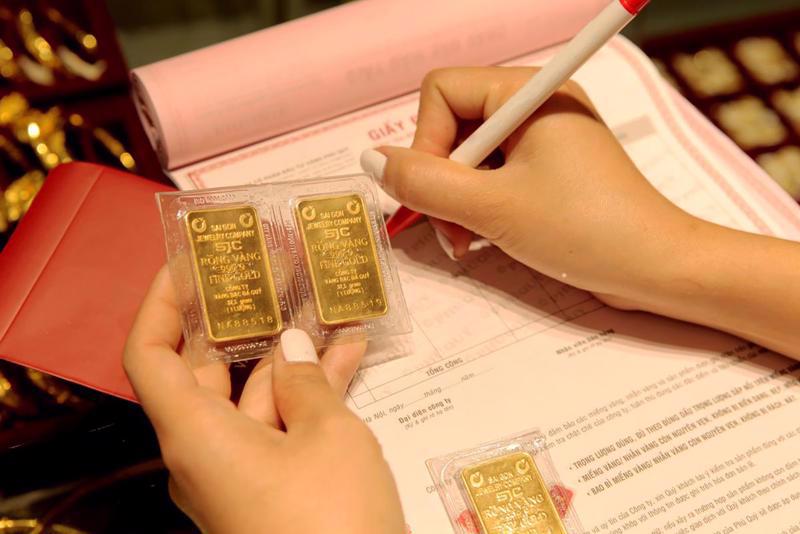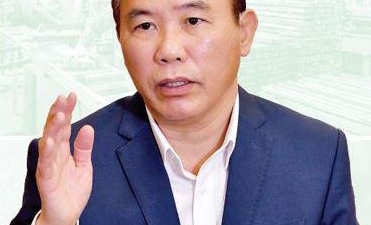Recommended solutions for stabilizing gold market
Measures need to be identified and implemented to reduce the Vietnamese public’s longstanding fascination with gold.

Analysts have often highlighted that Vietnam’s foreign reserves are limited while its economy requires significant capital for growth. Utilizing foreign reserves to stabilize the local gold market is therefore considered quite extravagant, as gold is not an essential commodity. It is crucial, however, to reassess Vietnam’s approach and seek methods to reduce the gold market’s allure, steering the public towards alternative investment channels that better support economic development.
Distinguishing between commodity and foreign reserve
Vietnam’s gold market largely consists of numerous small gold shops buying from wholesale suppliers, particularly in the country’s south. This group holds substantial quantities of gold and can manipulate prices, significantly affecting the market. Buying and selling prices are set by these shops, and the public merely accepts these prices. Despite gold shops having different owners, prices remain relatively similar.
Speaking at a seminar entitled “Preventing the risk of 'goldenization' of the economy”, organized by Vietnam Economic Times / VnEconomy on July 8, Dr. Ngo Minh Hai, Vice President of the Ho Chi Minh City University of Economics and Finance, referred to these wholesale suppliers as “market makers”, who set the prices for small gold shops to trade. Consequently, these “market makers” can control market prices.
Analysts also emphasized that these “market makers” were established long before the introduction of Decree No. 24/2012/ND-CP on April 3, 2012.
They have also identified other entities holding large quantities of gold as key players that manipulate prices and influence the market. Consequently, Vietnam’s gold market will only stabilize with a robust legal framework and the cooperation of various ministries and sectors to expose the trading activities of these “market makers”. Transparency in this regard would help prevent money laundering, price manipulation, tax evasion, and market disruption.
Analysts have highlighted several pressing issues: (i) unclear roles and coordination mechanisms between ministries and sectors in managing the gold market, (ii) a lack of specific regulations on gold jewelry, leading to loopholes and misrepresentations, with nominal gold jewelry containing over 99 per cent pure gold, and (iii) unclear distinctions between foreign exchange gold and commodity gold.
According to Dr. Hai, from a market perspective, the government should transition to managing quality standards and appraising and certifying eligible gold bar manufacturers, rather than stabilizing the market by selling gold, as is currently the practice.
The government needs to clearly define the roles of the State Bank of Vietnam (SBV) and relevant ministries in managing gold quality and business conditions, recognizing those that meet national quality standards. For instance, the Ministry of Science and Technology should inspect and certify whether a gold brand meets purity standards.
Analysts also recommend that the government develop clear regulations on gold jewelry. If gold jewelry is to be classified as such, the pure gold content should be from 61 to 75 per cent. Producing gold jewelry at this rate requires significant processing, unlike simply casting pure gold into molds for market sale. Clear regulations would limit legal loopholes and gradually reduce gold’s attractiveness.
Once regulations on gold bars and gold jewelry are established, regulatory bodies should then separate the management of the foreign exchange gold market from the domestic commodity gold market. Analysts suggest that the government could learn from China’s model in this regard.
In Vietnam, regulatory bodies should clearly define which type of gold is considered a commodity and which is a foreign exchange reserve. Distinguishing between commodity gold and reserve gold will also clarify tax policies.
If businesses import raw gold materials to produce jewelry for the domestic market, they should be subject to regular import and value-added taxes. However, if gold is imported for central bank reserves, it should be tax exempt. According to economic theory, the central bank should only manage gold that is exported and becomes foreign exchange gold, impacting monetary circulation and foreign currency used to import gold.
Selecting a gold exchange model
There have been numerous proposals in recent times to establish a physical gold / certificate trading exchange.
Dr. Nguyen The Hung, Vice President of the Vietnam Gold Trading Association (VGTA), noted that most countries trade gold on regulated exchanges. These countries have specific regulations for their gold exchanges, detailing the criteria and necessary conditions for participants. Additionally, they maintain a commodity market oversight committee to monitor gold exchange operations. Regulatory bodies in Vietnam could look to the Shanghai Gold Exchange in China or the Borsa Istanbul Gold Exchange in Türkiye as models to follow, given the similarities with Vietnam’s gold market.
However, Dr. Hai, adopting a more cautious perspective, argues that there is no immediate need to rush into establishing a gold exchange. “Consider the exchange rate scenario,” he explained. “International foreign exchange transactions are being efficiently managed by commercial banks. The same approach could be applied to gold; banks, being professional investors, are already handling it well. Assigning this responsibility to banks allows the SBV to control capital inflows and outflows, indirectly managing exchange rates and investment flows.”
He further emphasized that opening the gold market, particularly gold derivatives, to the general public could make it difficult to control capital flows, prevent money laundering, and manage exchange rates. Given that foreign currencies do not yet operate under an exchange mechanism, implementing such a system for gold would be challenging.
A former leader of the Monetary Policy Department at the SBV mentioned that a previous SBV Governor often consulted with analysts on managing the gold market through gold certificates or bills. However, Vietnam’s financial market was too underdeveloped at that time to implement such solutions. Now, with strengthened and modernized financial market infrastructure, the expert believes regulatory agencies could reconsider such proposals.
He suggested that for a national gold exchange to be effective, it should not merely act as a trading platform for physical gold or gold certificates. It must include a comprehensive range of services and utilities related to transactions, payments, verification, delivery, tax obligations, and the identification of gold ownership by individuals or organizations. The government needs to develop an overall proposal for this initiative.
First, a framework decree is necessary for the operation of such a gold exchange, with an initial pilot phase of three to five years. Following the pilot phase, a thorough review should be conducted to identify strengths and weaknesses, avoiding premature large-scale development that could lead to stringent management if issues arise.
Analysts point out that many countries have, at certain times, restricted citizens from owning pure gold when their national currency loses value. Instead, the State issues gold exchange-traded funds (ETFs) to the public.
For instance, in the US, the US Fed sells ETFs to citizens, representing the amount of gold they hold. Citizens can buy as much gold as they want, but the State issues a certificate instead of actual pure gold. This way, the US Fed retains the pure gold as a foreign exchange reserve. People can trade these certificates among themselves or sell them back to the central bank.
After implementing this measure over an extended period, the State is able to regulate the market. The gold market would lose some of its allure because holding a certificate is different from holding pure gold. Additionally, it creates transparency, enabling the central bank to determine and answer the question of how much gold the public holds. This is a strategy Vietnam may consider to reduce the public’s fascination with the precious metal.







